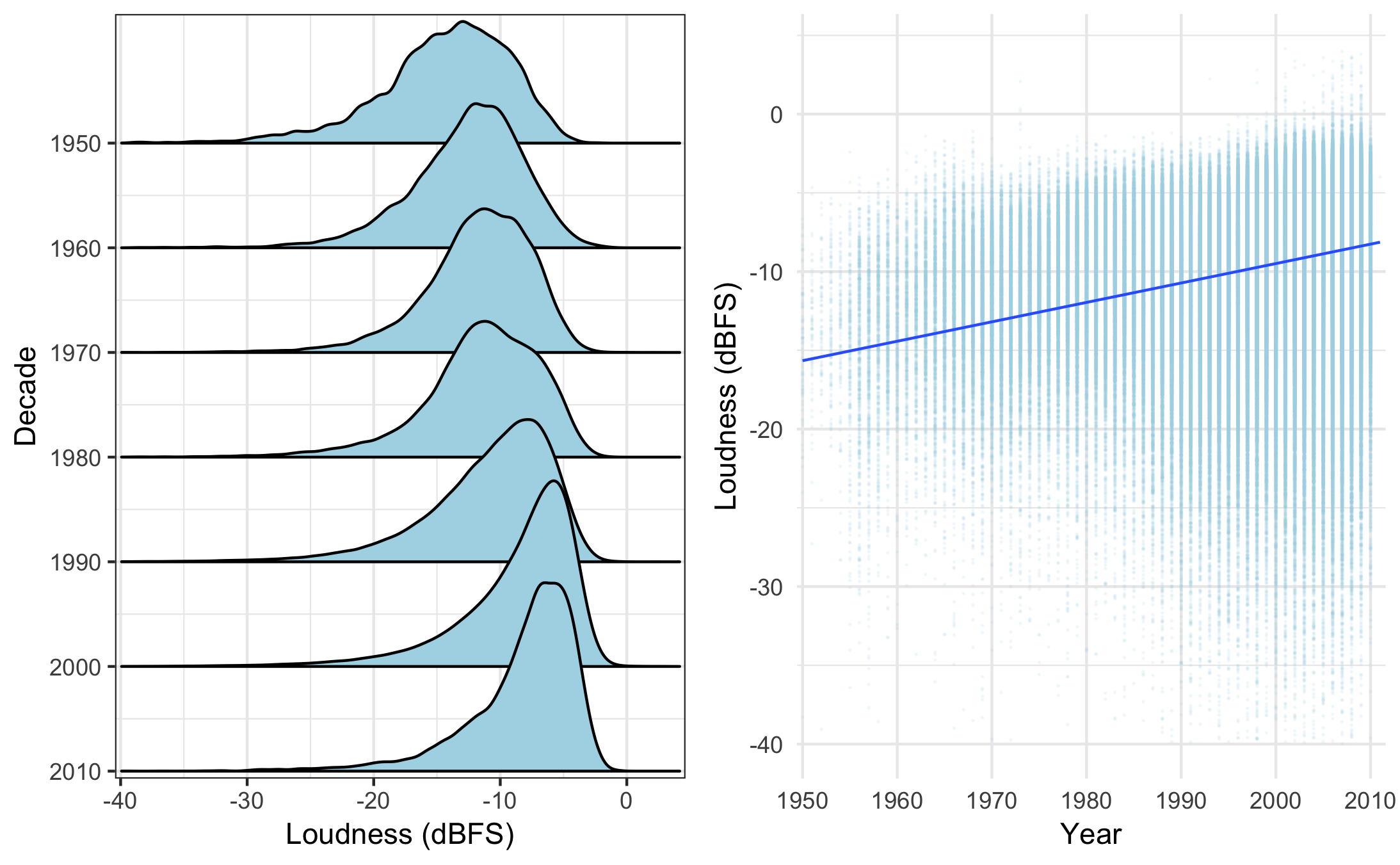

David Curran
Repeat recreational exposure to loud music is a key risk factor for noise-induced hearing loss (NIHL) and represents a major public health concern. The WHO estimates that 50% of individuals aged 12-35 in developed nations are regularly exposed to unsafe levels of sound from personal music players, with up to 1.1 billion youth worldwide at risk of consequent NIHL. Few studies have examined the evolution of the underlying audio-engineering of music, a systemic factor which may contribute to NIHL. Over time, industry trends toward dynamic range compression may have progressively accentuated popular music sound intensity, a phenomenon generally referred to as the “loudness wars”. We therefore sought to quantitatively assess temporal trends in music loudness by examining the loudness of popular music released over the past six decades. We analyzed the Million Song Dataset, a public dataset of tracks released from 1922 to 2011. The development and content of this dataset have been previously described. Briefly, it consists of the metadata of predominantly occidental popular music; loudness data are reported in decibels relative to Full Scale (dBFS), a measure of intrinsic loudness for digital media which is correlated to Loudness Units relative to Full Scale, the European Broadcasting Union’s official measure of normalization for volume of audio delivered to the human ear. Spanning from the 1920’s to the 2010’s, mean (standard deviation [SD]) of song loudness was modelled linearly for each decade that contained >1000 songs. Kernel density estimation was used to normalize the frequency distribution of song loudness and create ridgeline plots for each decade. Combined year and loudness data were available for 515,412 songs released from 1922 to 2011, with all decades from the 1950’s onward containing 1000 songs (total n=514,579). Overall mean (SD) song loudness was 10 (4.9) dBFS, with means ranging from -14.4 (5.1) dBFS in the 1950’s to -8.2 (4.27) dBFS in the 2010’s. When modelled linearly, mean
Loudness increased by 1.233 dBFS/10 years (95% confidence interval 1.221-1.245) (p<0.001). Social exposure to noise from personal music players is a major cause of preventable hearing loss and a growing public health concern. 1,2 Although higher volume levels and longer durations of exposure are well-established user-level risk factors for NIHL, our study is the first, to our knowledge, to demonstrate an ongoing, progressive accentuation of the intrinsic sound intensity of popular music over time, a potentially preventable, but music industry-level, risk factor for NIHL.